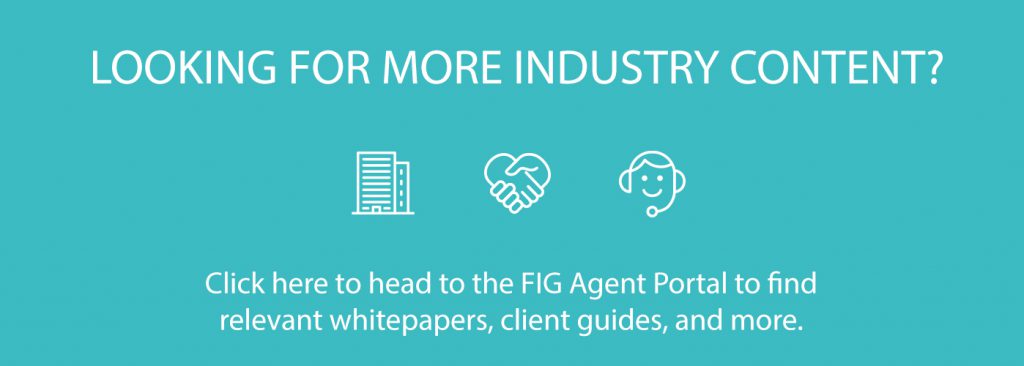Updated September 7, 2023, at 2:45 PM
In business, continued success and growth result from developing personal relationships and strong communication with your clients.
To become a leader in the financial industry, you need to engage on a more personal level. This habit enables you to understand each person’s needs for maintaining their legacy and allowing them the freedom to reap the rewards of their hard work.
Historically, financial firms focused on generating new clients through seminars. New research indicates that businesses now realize their top-quality clients came from getting more referrals, not seminars (but that’s not to say seminar marketing isn’t effective). Change is happening! Successful financial professionals opt to host fun and engaging events with A-list clients and guests, introducing them to the newly created concierge-level service.
A client appreciation program’s goal is to create personalized relationships with your top clients by using proven marketing and public relations strategies. We want you to be successful in enriching your client relationships, so your clients become advocates for your firm, creating a strong and fruitful business.
Remember: Words speak volumes, but actions create loyalty.
12 Habits to Create a Great Client Appreciation Program
Habit 1: Get Organized
Your organization will be the key to a smooth and productive transition into your more personal-based practice.
To get started, purchase a sturdy 3-ring binder or invest in a digital binder such as Microsoft OneNote. Choose something you like because it’ll become your new companion. Create tabs for the following:
Clients
Editable spreadsheet of your clients in alphabetical order—include phone numbers, addresses, and email information.
Client Bios
Insert each client’s bio alphabetically by their last name.
Lunch & Learns
Any venue contracts, food options, and attendee lists.
Client Kick-Off Parties
All contracts, rental information, budgets, attendee lists, or any other related items.
Men’s & Women’s Events
Include all contracts, receipts, attendee lists, and gift ideas.
Client Appreciation Events
Store all contracts, rental information, budgets, and attendees lists.
Calendar of Events
Mark the calendar with all your saved dates keeping the most current on top.
Weekly Email
Articles sent and ideas for future topics, previous copies, records of bounce-back and opt-out emails, and any other analytics.
Quarterly Newsletter
Articles, interviews, previous newsletters, records of bounce-back and opt-out emails, and again, any other analytics you may have.
Anniversaries, Birthdays, and Special Dates
Editable spreadsheet with all important dates, card company information, gift ideas, and vendor information.
Holiday Gifts
Include vendors, gifting lists, receipts, and ideas.
Client Gifts
Also include vendors, gifting lists, receipts, and ideas.
Marketing Material
Marketing ideas, invoices, links to PDFs, or other marketing materials.
Charity Information
Charities you support, invoices, philanthropic ideas, and more.
Habit 2: Create a Foundation
Identifying your top families is going to be the key to this more concierge-like practice you’re creating. Your top families are more than just your clients that have the most investments in their portfolio; they’re the ones that trust in you enough to refer you to their friends and relatives. Pick these clients out and identify them as your “top families.”
Some practices organize their clients by the assets they hold with their firm (for example, A, B, C, etc.). This style is a different list that doesn’t speak to their assets but rather their relationship with you. These clients will become your focus and the group you’re creating memorable events for to cultivate your ideal practice.
With that in mind, make sure you:
- Set up a meeting with your team and work together identifying your top families
- Create a spreadsheet listing contact information, including phone numbers, emails, and home address
- Put this information in your binder under clients
Habit 3: Personalize Client Information
Once you’ve identified your top families, it’s time to get to know them. Use any generic bio information sheet to track and learn more about each family.
Call them personally and emphasize that you’re calling to build a more personal relationship with your top families and that this is in no way a sales call. Spend time talking with them and encourage them to share personal stories about their wedding, how they met, or about their grandchildren.
These are the stories that make it easier to engage, build trust, and feel more connected, so you can comfortably ask for referrals in the future. Most people like to share about themselves and reminisce, so listen and take notes. Embrace and enjoy this process.
Related: 6 Tips to Help Financial Advisors Connect with Millennials
Habit 4: Calendar Memorable Dates
Now that you’ve gathered vital information about your clients, it’s time to organize it for easy access. Having access to the correct information when you need it breeds success. Forgetting important dates isn’t the worst thing in the world, but you’re trying to go the extra mile, and you need a foolproof way to remember.
Take note: if you don’t intend to act on the information, there’s no point in collecting it. The most important dates to keep in your calendars are birthdates, wedding anniversaries, and yearly client anniversaries.
Here are some tips to think about:
- Add any important dates to your digital calendar as soon as you discover them
- Set a reminder to alert you one week in advance
- Set each date as a recurring event, so you only need to enter it once
- If you color code these events (for example, red for birthdays, blue for weddings, green for anniversaries, ), it’ll be easy to know which gift or card you’ll send that day
Habit 5: Create a Client Experience

Not all contact with clients is virtual, so create a welcoming and professional entryway for times when you greet clients at your office.
You know how realtors bake cookies to make buyers feel at home? Well, you want your top families to experience the same feeling. You’ve spent time getting to know them so, let them get to see you both personally and professionally. The client appreciation program starts the minute someone walks through your door.
Start improving your client experience with this to-do list:
- Provide a menu of drinks or snacks to choose from
- Have personal photos of your family on display
- Scent is important, and vanilla- or apple-scented candles (and plug-in scents) are very welcoming
- Have any articles or books you’ve written or been published in, plus a variety of industry-related publications on a coffee table or framed on a wall
- Leave brochures of your referral partners set out in case someone needs their services as well
- Have a video about you or your firm playing in the lobby or some nice background music if a video isn’t possible
- Have an album full of client event photos on the coffee table or digitally display them by placing them on rotation on a TV or digital picture frame
Habit 6: Calendar of Important Dates
Once you’ve decided on your events, the dates and time, and have reserved your venues, it’s crucial to get this information out to your clients. You’ll be investing a lot of time and revenue to create these experiences for your clients, so you want to ensure a good turnout.
Sending this calendar out one to two months before the start of your official event season is recommended. If you must make any changes, revise the calendar and mail the updated version noting all changes. Getting these out early also allows time for any date changes that may interfere with your events. Early notifications give clients time to figure out who they’d like to invite and ensure they’ll be in town.
Habit 7: Plan Your Events
Think about your clients and the community where they live. What interests did they talk about during the personal phone interviews? Do they like to golf, dance, bowl, play bingo, garden, or enjoy the theater? Use this information to create your events. Consider some local venues that can make the event special for your clients. You’ll be surprised by what your area offers once you start looking.
Select the dates for your events when your clients are primarily in town. Typically the strong client season runs from November through April. But creating some small intimate events in the off-season can be fruitful. Your goal is to touch your client base with at least one event each month.
Host a lunch and learn or dinner seminar with a featured guest speaker monthly except the month you plan your client appreciation dinner and pepper in some fun social events each month as well. It can also make sense to host two major events each year, one at the beginning of the prime season and one at the end.
Remind your clients to invite a guest or two to these events. It’s common to offer an incentive if they bring someone. The goal is to create a solid client base and take this opportunity to meet new potential families. It makes sense to ask about the guests before they arrive, so you have conversation starters when they show up.
Here’s a list of just a few ideas for client events that you can implement:
- Themed party at a local museum
- Live theater night
- Valentine’s Day dance
- New Year’s Eve party
- Wine and chocolate pairing party
- Culinary classes
- Card and game day
- Fashion show luncheon
- Technology instructional courses
- Local sporting events
- Trivia nights
- Charity auctions
Note: For more detail and client appreciation program resources, head to Marketplace One in the FIG Agent Portal and search “client love guide” to download the complete guide.
Habit 8: Send Emails with a Purpose
The value behind a client appreciation program goes beyond just using special events as a way to connect with clients. It’s intended to provide them with the vital information they need to make decisions about their future. It turns you from just another financial professional into the person they trust and feel comfortable going to with questions, no matter the topic.
It’s time to provide conversation starters. It costs fives times more to acquire a new customer than it does to nurture an existing one. You want to use an email marketing tool like Constant Contact to create and track your email communication with clients and prospects. Additionally, take a strategic approach and only send the most relevant messages so your readers don’t feel overwhelmed by their inbox. Here are three ideas to consider:
“Thought for the Week” Email
This is a quick touch to stay top of mind with your database and offer them something that might spur a question or a new idea. Each week send a “thought for the week.” It can be a thought-provoking idea about finances, the market, your community—whatever you want! You can even choose to send it from different advisors, so your recipients become familiar with your entire team.
Monthly Letter to Clients
Go beyond sending a weekly tidbit. A well-thought-out letter discussing timely topics each month provides an opportunity to engage in deeper conversations with your clients. Try to make these as personal as you can to engage your readers.
Quarterly Newsletters
Moving from a weekly touch through monthly targeted letters to a quarterly newsletter allows you to hit on various topics and even sprinkle in some sales content. Each quarter, send out a newsletter on different topics from investing to personal topics, letting your readers feel connected personally and professionally. Your newsletter should note any changes in your office, have an interview with one of your advisors, include a brief piece on a product you offer, and include any financial information that’s recently come to light.
Related: 10 Pieces of Retirement Planning Advice Retirees Wish They Had Known Sooner
Habit 9: Mail Cards
USPS is your friend. Holidays and special events happen year-round, and this is your opportunity to make an impression. A handwritten or personally signed card that’s sent via traditional mail says a lot about your commitment to your clients. These cards can range from holidays and anniversaries to graduations and retirements.
The cards you send should have a personal touch. You can have your cards made locally at a stationery shop. Try Etsy to find entrepreneurs that can make your cards, or go to sites like SendOutCards and Tiny Prints to have photo cards made. Send cards to all your clients, not just the top families. Again, birthdays should already be entered in your calendar, but it’s good to check your client database for meaningful life or religious events that the family might celebrate.

Habit 10: Gift with Intention
Not every moment deserves a gift, but you need to be prepared with the perfect item to show you genuinely feel connected to your clients when the time comes. Here are four situations where a gift to clients can mean a lot:
Holiday Gifts
Send your clients a lovely gift during the holiday season to say thank you for their business! Using a local company to supply them for you can also make an impression in your community. You’re sharing local businesses with your clients, which can make your clients their clients as well. It doesn’t have to be extravagant, just thoughtful.
New Client Gifts
When a new family becomes a client, it’s nice to show your appreciation with a welcome gift. Personalizing items for a family can take time, but having items with your firm’s brand that could relate to their hobbies or interests still shows you put thought into the gift. For example, families that hike would appreciate Tervis water bottles in a canvas backpack and some goodies tucked inside. It’s just a nice way to say, “Welcome!”
Client Business Anniversary Gifts
An anniversary gift will most likely be the same for all your clients. Order something that celebrates another year working together. For example, a digital photo frame or a cooler with a set of Yeti cups for a day out. Whatever you choose, you’ll want to have it branded with your firm’s logo, and make sure to have your gifts ordered, wrapped, and ready to go before the anniversary date. Check your calendar at the beginning of each month and mail all gifts out immediately, even if the anniversary is late in the month.
Death of a Loved One
This is a very difficult time for your clients. You can send a simple card, or if you prefer, you can send something small like a memorial wind chime to let them know you’re thinking of them. Wrap the gift with a card and include a handwritten note expressing your sorrow for their loss.
Habit 11: Referral-Building & Acknowledgements
When a client refers someone to you, it’s a big deal! You’re working hard at developing your client appreciation program, so make sure to thank them in a big way. Your clients believe in you and what you stand for and want to recommend you to their friends. That should make you feel proud, and saying thank you is crucial.
Put together another gift package for this; consider a gift card to a restaurant they like (from their bio sheet) and a thank-you card. If the client has referred several families, take them out for an intimate dinner with you and your spouse.
Habit 12: Tell Your Story with Video
How can a current client express to friends their relationship with you? Let a video tell your story!
Even after a guest has attended one or more of your unforgettable events and received your conversation starters, there may be hesitation. How can you make it easier to break those comfort barriers? You’ve invited these guests to many events so they can experience the relationship between you and your clients. They’ve seen firsthand the way you interact with clients and the trust that’s developed. Your last step is to create an opportunity for them to see you outside of the business world to see what matters most to you.
Create a video that shows your life outside of the office. Include interviews with spouses, children, and other close friends or business acquaintances. Ideally, you want to shoot a professional video, but if time or budgets don’t allow for it, enlist someone confident at recording and editing videos. You also want to shoot in several locations to present a more casual and natural feel. It’s okay to pepper in some office meetings and daily activities but not too much because they see this as “too businessy.” You want this to showcase your personality and lifestyle, not sell your business services.
If you’re involved in any charity or community work, highlight that activity so viewers get a true sense of your values and what drives you outside of the office. Lastly, any opportunity to advertise for a local charity is typically welcomed.
Keep Reading: Financial Dinner Seminar Best Practices to Drive More Business
For Financial Professional Use Only – Not for Customer Use
Source: Global Financial Private Capital


